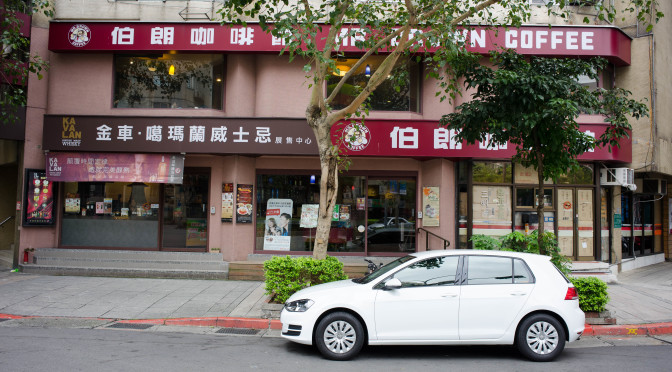Lately, I’ve been writing about the safest vehicles we can place our loved ones in when it comes to surviving side impact collisions. First I described the safest cars of 2015 per IIHS side impact intrusion metrics. Next I wrote an article describing the safest minivans available in 2015 for surviving t-bones based on the same metric. I then set to work to write the equivalent article on surviving side impacts in SUVs made in 2015. Today’s article continues the series with an emphasis on side impact collision survival in subcompact and compact (mini and small) cars made in 2015.
As I’ve noted in the previous editions of this series, side impact collisions tend to be the most life-threatening, out of side-, front-, and rear-end collisions. We’re going to dig into the numbers in a minute to explain this.
Unfortunately, due to a number of reasons, car collisions continue to take close to 100 lives each day across the United States. The NHTSA estimates of crash fatalities are always a little lower than the actual number, since the NHTSA only counts traffic deaths that occur on public roads. The NSC does a more accurate job, since they include these deaths. That said, let’s use the NHTSA data from 2013 to look at the impact of side-impact collisions.
What kind of car crash is most likely to be fatal, and what kind is most common, out of front, rear, and side collisions?
Out of the 32,719 auto-related deaths of 2013, 65% of those, or 21,268, involved occupants of passenger vehicles (cars, pickup trucks, and SUVs). Of those collisions, overall, 53% of deaths were due to frontal impacts, 25% were due to side impacts, 5% were due to rear impacts, and around 16% were due to rollovers.
Let’s break that down into multiple-vehicle collisions, since that’s what we’re most interested in here. About 10,950 deaths were in single vehicle crashes while around 10,318 were due to multiple-vehicle crashes. Of that 10,318, 34% were due to side impacts while 56% were due to frontal collisions, 8% were due to rear collisions, and 2% were due to rollovers.
In contrast, when looking at collisions overall, 52% of collision claims made to insurance companies involve frontal collisions, while 21% involve side collisions (10% on the driver’s end and 11% on the passenger’s), and 28% involve rear impacts.
What this means is that even though only around 1 out of every 5 collisions involve side impacts, they lead to 1 out of every 3 vehicle occupant deaths in multiple vehicle collisions. In comparison, basically 1 out of 2 collisions involve frontal impacts, which lead to around 1 out of every 2 multiple collision deaths. Even more dramatically, while more than 1 out of every 4 collisions are rear enders, they only result in around 1 out of every 12 multiple collision deaths.
Looking at the data makes it clear that side impacts are the collisions most likely to be fatal, even though they’re actually the least common type of collision.
Small cars are better for the earth…but which are the safest?
The odds are even more against us when driving smaller cars, since unfortunately, this is a country populated by giant vehicles and people who don’t drive them very safely. This is an example of a side collision between a small vehicle and a large one. The results were tragic, but unfortunately expected, given the speed and mass discrepancies present. But there are plenty of reasons to drive small cars, whether to save money in purchase prices or in fuel, or to lessen our impacts on the environment, or to make it easier to park and drive in general, or to reduce the risks we place on individuals without any vehicular protection, such as cyclists, children, and pedestrians.
With that knowledge in mind, how do we protect our loved ones while driving small cars? Because whether our loved ones are spouses, young children, adolescents, grown children, siblings, parents, or lifelong friends, they deserve to be safe while traveling, even if they aren’t willing or capable of spending the $51,800 necessary to buy the safest car for surviving a side impact, the Mercedes-Benz E-Class. So what other options are there?
How to keep from dying in a side impact collision – what can we do?
Unfortunately, it’s going to take a while before we make the societal changes necessary to make our roads safer for everyone. We have a much more lax policy on drunk driving than most other countries with lower car crash death rates. We have much fewer restrictions on the sizes of vehicles people can drive. We don’t enforce speed limits nearly as much. We also design our roads to make it easy to go quickly instead of safely. We have few transportation alternatives so we have more people who drive farther distances and who drive more frequently.
I’ve written about some of these issues in past articles, such as one on why Swedish roads are among the safest in the world, and another on why driving in Europe is safer than driving in the US. I’ll have more articles soon about the things we can learn from other countries when it comes to driving safely.
However, until we’re willing to make a number of necessary changes, if you’re invested in keeping your family safe from death in t-bone collisions, I’d recommend you:
1.) Avoid driving (e.g., by using public transportation or by cycling or walking…eventually this leads to a critical mass where everyone is safer).
2.) Limit driving (by the same measures above and by combining trips).
3.) Drive the most side-impact-resistant vehicles possible.
Ultimately, to truly bring an end to side impact collisions, as well as to all collisions, we’re going to need to be forced to invest in the first two measures. I’d consider self-driving or autonomous vehicles to be part of “avoiding driving,” even though those aren’t going to eliminate collisions completely until the vast majority of vehicles on the road are no longer being driven by humans (the critical mass argument).
However, unless you’re in a position to completely follow step 1, you’ll need to focus on 2 and 3. Step 2 isn’t always feasible either, so this post focuses on Step 3, and is specifically related to choosing the safest small cars for side impacts currently available in the US in 2015. The equivalent article about the safest cars of any size for side impacts in the US in 2015 is here while the equivalent article about the safest minivans for side impacts in the US in 2015 is here. I most recently finished the equivalent article on the safest SUVs and crossovers for surviving side impacts in the US in 2015.
Calculating which small cars are the safest for side impact collisions by structural integrity (crush distance)
I’ve written about the math behind these calculations in previous posts, such as in the relevant articles on surviving side impacts in 2015 cars, minivans, and SUVs and crossovers, so hop back to those articles to read about this in detail. The short version is that the IIHS runs a side impact test. It simulates a 3300 lb SUV crashing into the side of a vehicle at 31 mph, or 143.7KJ of kinetic energy. Every vehicle deforms somewhat at the B-pillar when absorbing such an impact, and there’s a subscore in the IIHS test known as the “structure and safety cage” looks into how close the B-pillar intrudes into the center of the driver’s seat during the collision. Less intrusion is better.
The greater that crush space, given a vehicle’s overall “good” score for the side impact test and presence of airbags, the safer the vehicle.The threshold for a “good” subscore in the structural component of the side impact test is 12.5 cm of impact resistance, and for me, that’s where we’re just getting started. It’s possible to have an “acceptable” subscore or even a “marginal” one and still have an overall “good” score, but every component in a vehicle is either adding to or taking away from your safety, and I’m interested in looking behind the curtain, as it were.
Even though a vehicle might score “good” overall on the side impact test, would you rather sit in one with a 3 cm crush space or one with a 30 cm crush space?
That’s what this list is based on. Every cm between you and a life-ending amount of energy is a life-preserving cm of survival space. Let’s see who’s doing the best job at it right now.
I searched through the test scores of every small (compact) or mini (subcompact) car currently available in the US to make this best-of list. Keep in mind that the IIHS continually updates their side impact information while gathering additional information, so in a few months, it’s likely that these numbers may be slightly different. All data is accurate as of Saturday, October 24th, 2015, and all images are courtesy of Wikipedia.
The 10 safest small cars for side impact collisions in 2015
 22 cm – 2015, 2016 Volkswagen Golf / GTI.
22 cm – 2015, 2016 Volkswagen Golf / GTI.
I first wrote about the Volkswagen Golf in the overall top car side impact survival list from earlier this summer, and was pleasantly surprised to find a small car being the 3rd best car on the list. In the land of small cars, it’s the best of the bunch. The Golf is available in several flavors, but all feature good safety scores, including the side impact frontal crash test score, and all feature a class-leading 22 cm of side impact intrusion protection.
You can read my full 3 across car seat guide to the Golf / GTI here.
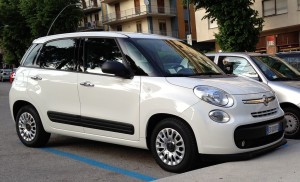 21 cm – 2014, 2015 Fiat 500L.
21 cm – 2014, 2015 Fiat 500L.
I first wrote about the Fiat 500L in the overall top car side impact survival list from earlier this summer, and was pleasantly surprised to find multiple small cars high on the list. In the land of small cars, it’s the second highest vehicle on the list. It’s the 4-door analogue to the Fiat 500, which is a 2-door subcompact hatchback.The biggest drawback to the 500L is its poor small overlap score, which Fiat needs to address, and soon.
You can read my full 3 across car seat guide to the 500L here.
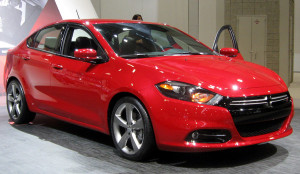 19 cm – 2013-2015 Dodge Dart.
19 cm – 2013-2015 Dodge Dart.
The Dart was the only other small car to make an appearance on the top intrusion-resistant car list I wrote up earlier, and it’s no surprise as a result to see it rank well here. The Dart features a bevy of good safety scores and also has an acceptable small overlap score. Being a new model (besides the Dart from the ’70s, which was a completely different car), it hasn’t had any driver death rate data published yet, but I’m looking forward to seeing how it does. It’s also worth noting that the Dodge is the second Fiat Chrysler Automobiles vehicle on this list.
You can read my full 3 across car seat guide to the Dart here.
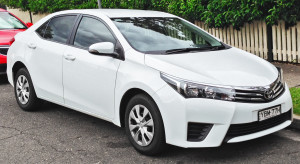 18.5 cm – 2014-2015 Toyota Corolla.
18.5 cm – 2014-2015 Toyota Corolla.
The Corolla is the most popular small car in the US, as well as the best-selling small car on the planet. It’s good to see it’s also one of the safest you can buy in the US when it comes to surviving side impact collisions. The biggest safety drawback to the current generation Corolla is its marginal small overlap score. The largest drawback from a car seat perspective is that the current generation is also essentially a 4-person vehicle, and you can’t install 3 car seats across the back row.
The previous generation of the Corolla had a driver death rate of 32 during the ’10-’11 model years,with slightly more than half (18) due to multiple-vehicle crashes. That generation featured 14.5 cm of intrusion resistance. This was one of the best-performing small cars in terms of driver survival in that study, and I look forward to further improvements in the future from Toyota here.
I’ve written up a full 3 across car seat guide to several generations of the Corolla here.
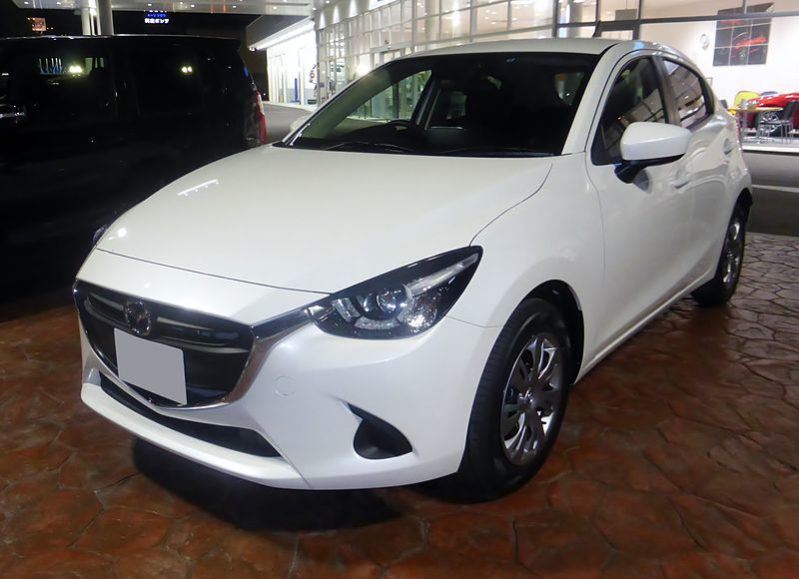 18.5 cm – 2016 Scion iA.
18.5 cm – 2016 Scion iA.
Marketed by Toyota’s young-aimed brand Scion, the iA is actually a rebranded Mazda 2, since Mazda and Toyota partnered and Mazda pulled the 2 from the US market as a result. we get to enjoy the iA. The first minicar on the list, it features good safety scores in every area, including in the small overlap test, and even features some level of automated front crash prevention. I’m looking forward to learning more about how the iA performs in real-world conditions under the ultimate metric: the driver death rate.
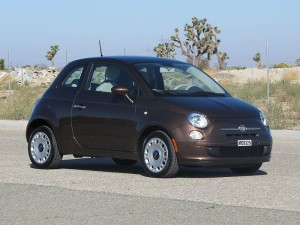 17.5 cm – 2012-2015 Fiat 500.
17.5 cm – 2012-2015 Fiat 500.
The Fiat 500 is the second minicar on the list, as well as the second Fiat and third vehicle by Fiat Chrysler Automobiles. It has good safety scores in every area except for in the small overlap crash test, where it scored poorly. In that respect, it’s identical to its larger 500 sibling.
Unlike the Fiat 500L, the 500 is a 2-door hatchback and one of the shortest cars on the market, but amazingly, you can still fit multiple car seats in the back seat. And judging by its side impact scores, the children inside will be well protected. Good work, Fiat!
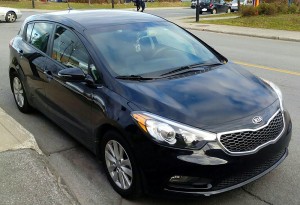 17 cm – 2015 Kia Forte.
17 cm – 2015 Kia Forte.
Kia makes their first appearance on any of the best intrusion resistant lists I’ve written so far with the Forte. Like most of the vehicles on this list, it features good safety scores in every area but the small impact test, where it obtained a marginal score. Kia will need to pay attention to that in the future to stay competitive.
The previous generation of the Forte had a driver death rate of 46 during the ’10-’11 model years and a side impact intrusion resistance of 7.5-9 cm, which gives you an idea of how much of an improvement the current generation is over the previous one. I look forward to seeing improvements in that driver death rate as well.
You can see my 3 across car seat guide to the Forte here.
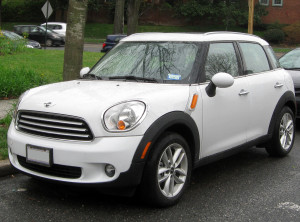 16.5 cm – 2011-2015 Mini Cooper Countryman.
16.5 cm – 2011-2015 Mini Cooper Countryman.
The BMW-owned Mini Cooper Countryman also scores impressively in intrusion resistance, and is the first vehicle on the list to feature good safety scores in all IIHS tests, including in the small overlap crash test. It’s Mini’s analogue to the Fiat 500L, being a compact 4-door version of the subcompact 2-door hatchback.
Its smaller sibling, the Cooper, does not yet have a side impact test score available, but I imagine it should do about as well as the Cooper Countryman. The smaller Cooper had a driver death rate of 21 during the ’09-’11 model years and offered 12 cm of intrusion resistance.
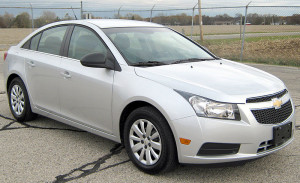 15.5 cm – 2011-2015 Chevrolet Cruze.
15.5 cm – 2011-2015 Chevrolet Cruze.
The Cruze is one of the most affordable cars on this list, and is another example of how safe car designs don’t have to cost a fortune. The largest strike against it is its marginal small overlap crash score, which Chevrolet will need to address in the future.
The first year of this generation, the ’11 Cruze, had a driver death rate of 42, of which nearly all deaths (35) were estimated to occur due to multiple-vehicle collisions. That’s higher than I’d like to see in any vehicle, but I’m hopeful it’ll decrease in coming years as the Cruze (and every other vehicle here) is outfitted with increasingly sophisticated crash prevention technology.
My full 3 across car seat guide for the Cruze is available here.
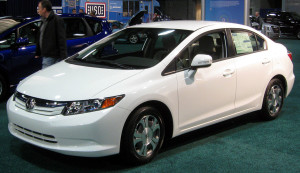 14.5 cm – 2013-2015 Honda Civic.
14.5 cm – 2013-2015 Honda Civic.
Last but not least (well, least in this list, but not compared to all small cars on the market), the Honda Civic deserves mention for its 14.5 cm of intrusion resistance. The previous generation of the Civic featured a driver death rate of 49 (with 28 due to multi-vehicle crashes) during the ’08-’11 model years, which was the worst driver death rate of the vehicles on this list with that data available. However, it’s important to note that it was still statistically within the confidence interval of the driver death rates of the Corolla, Cruze, and Forte. Its intrusion score was 10.5 cm.
I’ve put together a 3 across car seat guide for the Civic that spans several generations; you can access it here.
More broadly, I have to give Fiat Chrysler Automobiles credit for making three of the most intrusion-resistant small cars available in the US market today in the Fiat 500L, 500, and Dodge Dart. They dominate this list the way Ford and Mercedes-Benz dominated the SUV/crossover list and Subaru, Fiat Chrysler Automobiles, and Mercedes-Benz dominated the overall car list. If you’re looking for safe vehicles, these are the manufacturers to pay attention to right now.
How to choose a small car to keep your loved ones safe in side impact crashes
In conclusion, the market for safe small cars keeps getting better every day in the United States. There are several small cars that came within a fraction of a centimeter of making the list, but which I did not include in order to keep the list at the best of the best. The 2014-2015 Mazda 3, 2012-2015 Smart Fortwo, and 2014-2015 Ford Fiesta all tied at 14 cm of intrusion resistance, just behind the Civic.
As in the other lists, the takeaway message is that it’s worth the effort to look past the top “good” score and look at the subscore for structural integrity when looking for safe vehicles to survive side impacts. Naturally, you’ll start out with the overall “good” score and making sure that side airbags are present, but if you’re deciding between vehicles, this is a subscore that should be on your priority list if side impact survival is important to you.
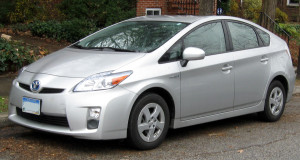 Small cars can be as safe as (or even safer than) much larger ones
Small cars can be as safe as (or even safer than) much larger ones
A final takeaway is the reminder that simply because a vehicle doesn’t show up on this list doesn’t mean that it isn’t safe. When it comes to small cars, the safest one in the most recent driver death rate study (which I’ve discussed extensively here) was the ’10-’11 Toyota Prius with a DDR of 16 and an intrusion score of 11-11.5 cm. That’s nowhere close to the top vehicles here, but its driver death rate was lower than that of most vehicles on the entire list, including much larger vehicles like the Chrysler Town & Country (25), Dodge Grand Caravan (27), Toyota Sienna (27), Chevrolet Impala (35), and Ford F-150 (19-39). That’s very impressive, and a strong reminder that safety doesn’t simply mean driving the largest vehicles you can find.
We can’t control everything. The safest option is still not driving at all, followed by driving as little as possible. But if you’ve got to drive, drive safely, and do your best to choose a safe vehicle. If you’re going to use it with children, definitely check out the plethora of best practice articles I’ve written here on choosing safe car seats, installation tips, seat reviews, and more information to help you make informed decisions.
I loved writing this article, and I hope you enjoyed reading it. I look forward to writing more articles examining various factors in car safety design and how they relate to keeping you and your loved ones safer while on the road. Stay tuned, remember to avoid common mistakes parents make with car seats, and check out some 3 across car seat guides while you’re here.
If you find the information on car safety, recommended car seats, and car seat reviews on this car seat blog helpful, you can shop through this Amazon link for any purchases, car seat-related or not. Canadians can shop through this link for Canadian purchases.

